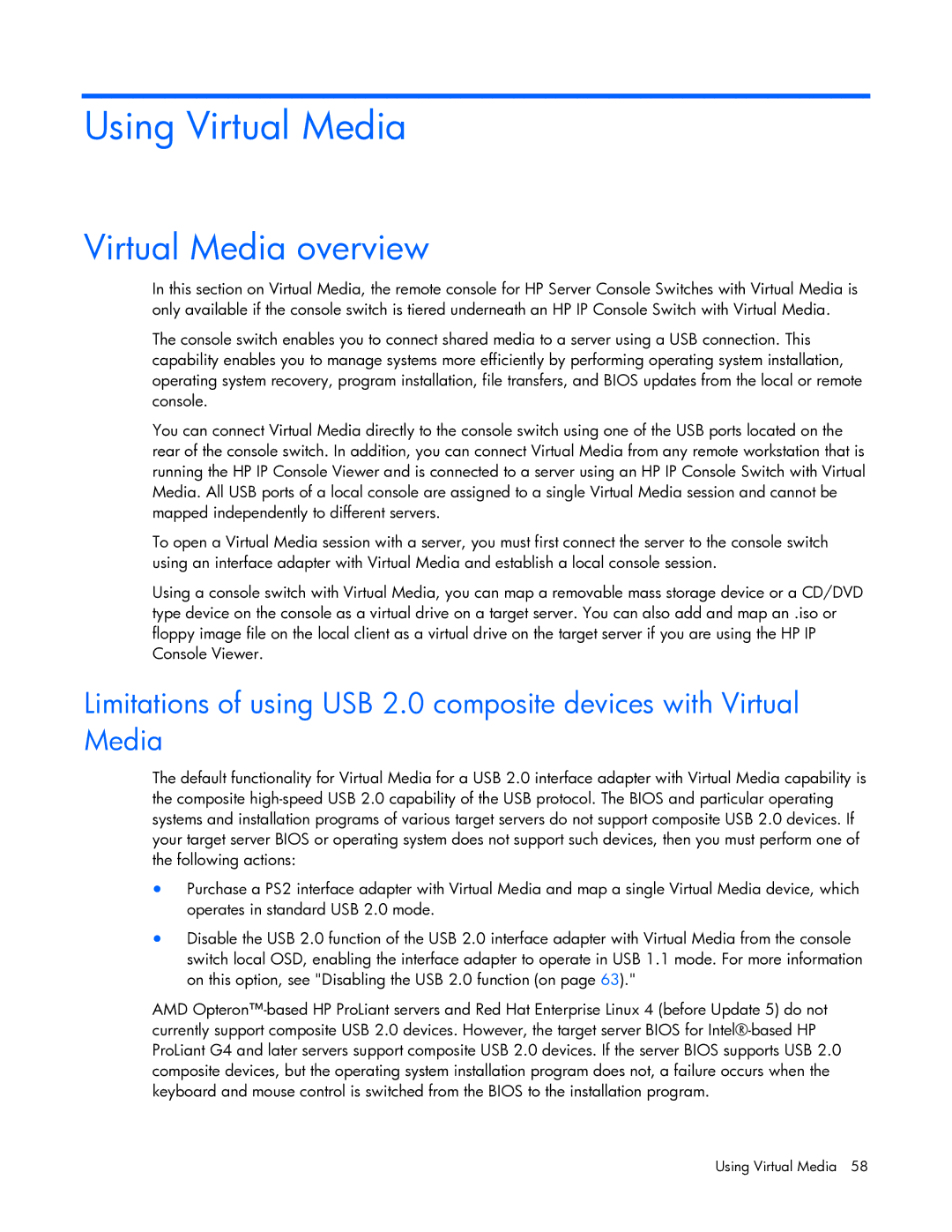Using Virtual Media
Virtual Media overview
In this section on Virtual Media, the remote console for HP Server Console Switches with Virtual Media is only available if the console switch is tiered underneath an HP IP Console Switch with Virtual Media.
The console switch enables you to connect shared media to a server using a USB connection. This capability enables you to manage systems more efficiently by performing operating system installation, operating system recovery, program installation, file transfers, and BIOS updates from the local or remote console.
You can connect Virtual Media directly to the console switch using one of the USB ports located on the rear of the console switch. In addition, you can connect Virtual Media from any remote workstation that is running the HP IP Console Viewer and is connected to a server using an HP IP Console Switch with Virtual Media. All USB ports of a local console are assigned to a single Virtual Media session and cannot be mapped independently to different servers.
To open a Virtual Media session with a server, you must first connect the server to the console switch using an interface adapter with Virtual Media and establish a local console session.
Using a console switch with Virtual Media, you can map a removable mass storage device or a CD/DVD type device on the console as a virtual drive on a target server. You can also add and map an .iso or floppy image file on the local client as a virtual drive on the target server if you are using the HP IP Console Viewer.
Limitations of using USB 2.0 composite devices with Virtual Media
The default functionality for Virtual Media for a USB 2.0 interface adapter with Virtual Media capability is the composite
•Purchase a PS2 interface adapter with Virtual Media and map a single Virtual Media device, which operates in standard USB 2.0 mode.
•Disable the USB 2.0 function of the USB 2.0 interface adapter with Virtual Media from the console switch local OSD, enabling the interface adapter to operate in USB 1.1 mode. For more information on this option, see "Disabling the USB 2.0 function (on page 63)."
AMD
Using Virtual Media 58
